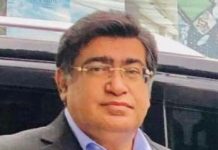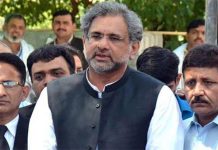The Pakistan Democratic Movement – the grand alliance of opposition parties – held its first rally on Friday, declaring it a referendum against the sitting government. Will this movement succeed where others have not is the question on the nation’s mind. Balach Khan takes us through the history of political movements; their successes and their failures.
Friday was the showtime for the newly assembled alliance of opposition parties, as all eyes will be counting bodies – measuring if the opposition has enough support from the people to achieve their goals. Although government ministers declared it a failed show, PDM claimed it a very successful show and a good start for the alliance.
The stated aim of the opposition alliance is the dismissal of this government and a midterm election to form new assemblies. Beyond the narrative and rhetoric of this lofty demand, the coalition wants something very simple; to be given some breathing space and an end to the political victimisation of the opposition.
While this implicit aim may be achieved if enough pressure is created, will the PDM be able to achieve its explicit aim; the overthrow of the sitting government?
Our collective memory is still fresh with PTI’s Azadi March (also dubbed the Tsunami March) of 2014 to dismiss the Nawaz government. For a lot of the younger demographic in the country, Imran Khan’s Dharna is the only mass protest in memory.
Crucially, that protest – which physically rocked the walls of the Parliament House – and the smaller ones by religious parties that have followed, all failed to achieve their stated goal.
A study of significant protests and their participants may hold the answer for us as to what really makes for a successful mass movement and whether the current opposition alliance – formed out of political expedience and backed only by dedicated party workers – has any weight to itself.
Decade of Development, Decade of Decadence
The second mass movement has been by far the biggest that Pakistan has seen in scope and impact. It is also the best-documented series of protests in Pakistan’s history. Birthed after the 1965 war due to the stagnating economic growth and a gross concentration of wealth, the movement fully erupted in 1968. Spearheaded by the National Students Federation (NSF) the movement gained national traction.
Student politics was immensely popular in Pakistan during this era and directly contributed to mainstream political discourse. A faction of NSF known as the Meraj faction under the leadership of Meraj Muhammad Khan grew closer to the mainstream politician Z. A. Bhutto, who had been dismissed from the Ayub Government following public outcry against the Tashkent Agreement signed after the 1965 war. Together with Bhutto, Meraj Khan founded the Pakistan People’s Party. However, the main organisation leading these protests were not the politicians under the PPP, but the students in West Pakistan under the NSF and the Bengali peasants in East Pakistan.
Imtiaz Alam, who had studied at Punjab University, reminisced years later: “On 7th November 1968 police opened fire on a student rally in Rawalpindi, which made the situation increasingly volatile. This incident also led all the student unions to unify under the Student Action Committee (SAC) that centralised the movement.”
This was the first movement which forced a sitting government to resign. Although students were at the forefront of the protests, the movement made Zulfiqar Ali Bhutto a popular leader and eventually the Prime Minister of Pakistan.
A populist’s popular fall
Less than a decade later, the very next government of Zulfikar Ali Bhutto faced a new round of protests. Bhutto’s government made it easier to join, register and form unions but cracked down with an iron fist against those who protested. These policies made Bhutto’s government unpopular. With waning support and a weakening government, Bhutto called a midterm election to bag an early victory and gain another 5-year term.
In polls, the Pakistan People’s Party (PPP) won the general elections in 1977 with a majority, however the leaders of PNA (Pakistan National Alliance) levelled allegations of election rigging at the party. The leadership of PNA included representatives of nine parties that had come together against the ruling party. They staged demonstrations, boycotted National Assembly sessions and opposed the election outcome.
The PNA movement was calling resignation of Prime Minister Zulfiqar Ali Bhutto and new election. The situation deteriorated as political parties refused to show flexibility on their stance. Bhutto was thrown in jail, and General Zia-ul-Haq came to power in July 1977.
This movement too was not successful in the way that it intended to – by making ZAB resign – but it had created sufficient chaos, which gave justification to the then Chief of Army Staff Zia-ul-Haq to overthrow the government.
Restoration of democracy; against all odds
After four years, in 1981, the Movement for the Restoration of Democracy (MRD) formed against the dictatorship of General Zia-ul-Haq. Benazir Bhutto of Pakistan People’s Party led the movement while opponents of his father like Wali Khan and other opposition leaders were part of the movement. Its primary objectives and aims were the restoration of democracy as well as gaining the civilian control of the military.
Formed in February 1981, the alliance was noted for its left-wing orientation and had Pakistan Peoples Party (PPP), Awami National Party (ANP), Pakistan Muslim League (Khwaja Khairuddin group), Pakistan Democratic Party, Tehreek-e-Istiqlal, Awami Tehreek, Jamiat-e-Ulema-e-Islam, and Mazdoor Kissan Party. MRD successfully mobilised the civil society by using the momentum built by the Women’s Action Forum and other women rights organisations which led to massive protests against the Zia regime.
However, the movement failed to overthrow the Gen Zia’s regime.
One of the reasons for this was the fact that it failed to expand beyond its southern stronghold in Sindh (where the execution of Z. A. Bhutto fueled the movement). The movement also waned when Zia announced a general election in 1985 (which never happened), once it was waning the military effectively repressed it with violence. So, within a year and a half, the alliance dissolved.
Musical chairs, momentous marches
The 90s, after the demise of Zia in 1998, were a decade of political turmoil. Within two years the democratically elected government of Benazir Bhutto was dismissed, and Nawaz Sharif assumed the Premier Office.
In 1992, Benazir Bhutto, marched against the first Sharif government, on charges that the general elections had been rigged. She toured the country from Karachi to Peshawar on the “Train March”; with pubic rallies on railway stations, a phenomenon popularised by Z. A. Bhutto.
But was it a successful movement? In an article published in The Nation daily, former Chief of Army Staff, Mirza Aslam Baig believed it failed.
The long march failed because then Army Chief, General Asif Nawaz, “looked the other way”, while Nawaz Sharif had a free hand to wield his stick. And of course, Benazir Bhutto had not done enough homework, to ensure success. The following year in 1993, Benazir Bhutto planned another long march. By July, the march began, and before she had reached Islamabad, then COAS, General Abdul Waheed Kakar had already softened up the ground for her. He had intervened and was able to convince the President and Prime Minister to abdicate, with the promise of holding fresh elections within 90 days. Benazir Bhutto called off the long march and prepared to win the elections by end 1993. Undoubtedly, she had done her homework, and it ensured her success.
“Long March Politics”, 12 August 2014, The Nation
Benazir won the elections of 1993, and Nawaz Sharif launched the Tehreek-e-Nijat against the Benazir Bhutto government. During 1994 to 1995, Nawaz Sharif along with Murtaza Bhutto started a Train March and travelled from Karachi to Peshawar. Nawaz Sharif also played an important role in organising strikes by labourers and industrial workers all over Pakistan during September and October 1994.
However, this march too had failed to topple the government.
Bhutto’s second government was dismissed when the difference between the Prime Minister and President emerged. Murtaza Bhutto, brother of Benazir Bhutto, was murdered in Karachi, which rapidly deteriorated the political situation. Eventually, President Laghari used the 8th Amendment in November 1996 and dismissed the second government of Benazir Bhutto.
Nawaz Sharif again came into power in 1997 with a solid two-thirds majority, and in 1998, Benazir Bhutto once again had formed the Grand Democratic Alliance to oust Nawaz Sharif. Nawabzada’s Nasarullah Khan’s eleven parties’ alliances; the Awami National Party; the MQM and Pakistan Tehrik-e-Insaf had become part of the alliance. However, the alliance proved futile as the last.
Nawaz Sharif’s second government was dismissed because of his decision to remove then COAS, General Pervez Musharraf, in an abrupt and unceremonious manner. The armed forces reacted sharply, as their chief was almost arrested when he was travelling from Sri Lanka to Karachi. As a result, Nawaz Sharif was arrested, his government toppled, and General Musharraf came to power.
An unlikely contender
After the turbulent decade of the 90s, popular street or protest politics in Pakistan saw a hiatus and made a comeback under the dictatorship of Musharaf. In 2007, General Musharraf dissolved the judiciary and deposed Chief Justice Iftikhar Muhammad Chaudhary along with sixty other judges. Musharraf met with the suspended-CJP and told him to resign, but he resisted. Then the suspended Chief Justice, Iftikhar Muhammad Chaudhary was called to the Supreme Court on the basis of a Presidential reference, but he was maltreated and pushed into a police vehicle. The picture gained much traction in the media and enraged the legal fraternity. This led to a nationwide lawyers’ movement, resulting in the first long march that asked for the restoration of judiciary. To sustain the protests that broke out, Aitzaz Ahsan advised Chaudhry to travel the country and address bar councils.
The Lawyers Movement can be termed a success, as it had restored Iftikhar Chaudhry as Chief Justice of Pakistan. However, this movement was not able to achieve its goals during General Musharraf period, nor had it gotten close to dislodging him from his position.
Justice Chaudhry restored when Nawaz Sharif led a long march against the People Party government in 2009. This march was successful because all stakeholders were agreed to restore Justice Chaudhry to end two year’s long political chaos.
D-Chowk, D-Days
After this national movement, a relatively smaller sit-in was held by the Pakistan Awami Tehreek (PAT), headed by PAT Chief Doctor Tahir-ul-Qadri. The protestors marched from Lahore to Islamabad and settled down at D-Chowk on Jinnah Avenue for four days. The march resulted in successful negotiations between PAT and representatives of Yousaf Raza Gillani led PPP government. Dr Qadri left Islamabad with a bag of promises, which he later claimed the PPP government did not fulfil.
The last major sit-in was the Azadi or Tsunami march organised by Pakistan Tehreek-e-Insaf (PTI) Chair Imran Khan that lasted from August to December 2014 and was later joined by Tahir-ul Qadri’s PAT. Imran Khan called the protest on charges of rigging in the 2013 general elections 2013 by PML (N). It received a near-daily coverage for 3 months with passionate speeches by Khan against not just the sitting government but the political set-up as a whole. The protest also saw some clashes with the police authorities which injured a few civilians. The protestors, on the other hand, broke into the PTV and other state buildings.
Nawaz Sharif government finally managed to engage Imran Khan’s party in a political dialogue which remained stuck deciding the “Terms of Reference” of the future negotiation.
Imran Khan had to cut the Dharna short in response to the terror attack on Army Public School (APS) in Peshawar. Despite being the longest protest against any incumbent government in the history of Pakistan, the protest failed to oust the Nawaz government; On the other hand, the protest surely asserted pressure and dented the popularity of PML-N. This protest made PTI a popular party across Pakistan.
The Dharna failed to remove Nawaz Sharif from the premiership. It was eventually another unlikely event – the Panama Leaks – which started a legal battle that declared the PML-N ineligible to hold office.
Who fights with the PDM?
It seems that the most effective protests are the ones that engage not only the political factions in the country but successfully mobilise the civil society, like the student protests of the 60s. So maybe the question for the opposition today is much more than pulling the crowd to their rallies and is to effectively lead a collective action with labour unions, press collectives, professional associations and other civil society institutions. With recent reports from Islamabad of doctors, labourers and lady health-workers having collective protests, the time seems rather opportune for the opposition political parties.
Will PDM be successful? It will depend on how PDM leadership will steer their movement. A direct clash with the establishment was never been a successful strategy. PDM can create space for dialogue with the stakeholders, but the dismissal of a government is not possible unless all are on the same page.









